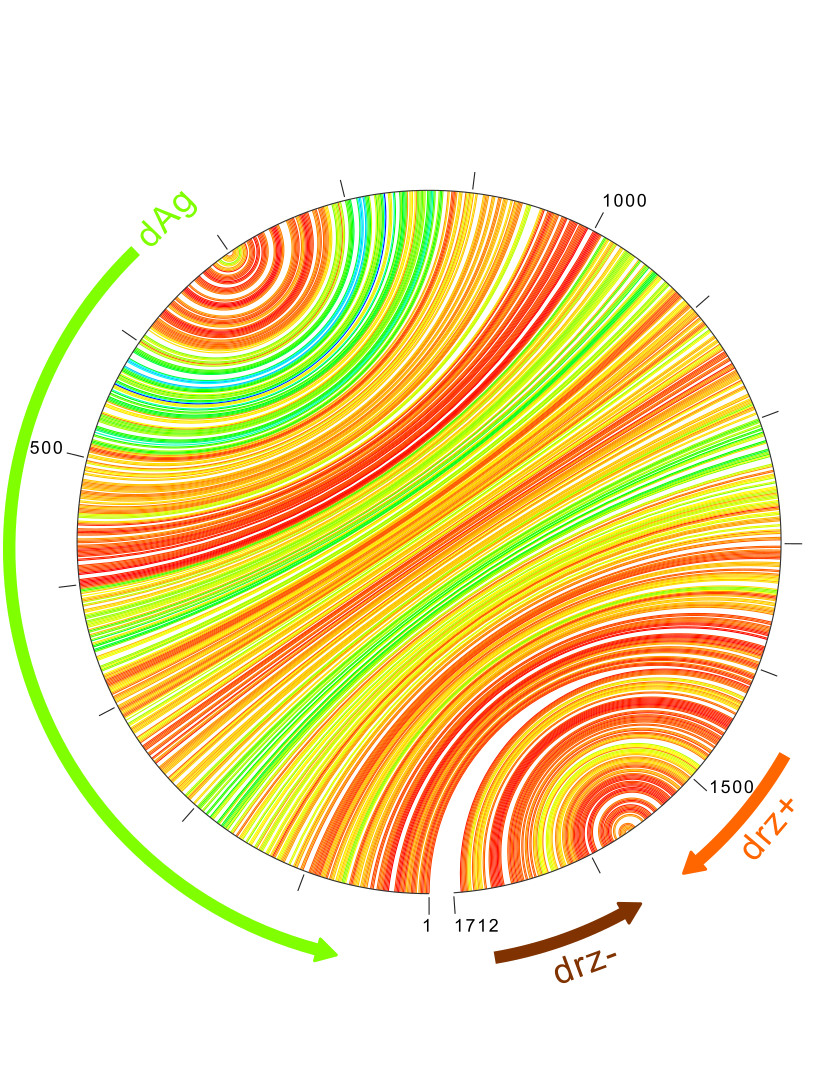-
Notifications
You must be signed in to change notification settings - Fork 33
deltavirus
While coronaviruses are well characterized, other viral families offer higher probability for identifying novel strains. In a personal correspondance with D. Streiker following a comment on the Serratus virological post and in extension to the recent pre-print from Bergner et al. we were interested if we could identify novel deltaviruses.
In a quick search of .summary files from vertebrates, we could identify a signature for a deep-hit in SRR4256033, an RNA sequencing of Odocoileus virginianus (White-tailed deer) pedicle sample. coronaSPAdes assembly of this libray yielded a complete, 1739 nt deltavirus genome.

A recent develpoment to Serratus is the use of diamond for searching reads against reference database containing protein amino acid sequences to complement nucleotide alignments by bowtie2. This enables the detection of more highly diverged viruses. The pilot search reference included viral UniProt sequences and all known deltavirus antigen proteins, as well as two representative dAg from vampire bats provided by Streiker and collegues, and dAg from the bambi sample. 100K sequencing libraries from non-human mammals were selected as the pilot search space mamm_SraRunInfo.csv.
With this we were able to identify two novel deltaviruses; Murray (SRR2136906) in Marmota monax (Eastern woodchuck) and Lassie (SRR7910143) in Peropteryx macrotis (Lesser dog-like bat).
In an expanded search including non-mammal vertebrates we identified Pete (SRR8954566) in the frog, Indira chiravasi, Darwin in several Zebra Finch and songbirds (SRR5001850) Taeniopygia guttata and a partial genome for Andy (SRR8242383) in the lantern fish Benthosema glaciale.
The murray virus was assembled from SRR2136906 to yield a 1712 nt circular genome. The virus has the characteristic 'bar' folding of a deltavirus.

The groundhog samples from this study by Fletcher et al., 2015 on the effects of IFNa on experimental infection with Woodchuck Hepatitis Virus (WHV). SRR2136906 and SRR2136907 samples with high titre Murray are replicate liver samples from the placebo-treated (WHV, no IFNa) animal designated 1008 taken on week 1 of the study. The same animal 1008 shows trace amounts of Murray virus at weeks 4, 8, 12, and 16 and no deltavirus reads on weeks 3, 20 and 24 suggesting waning viral levels following WHV challenge. WHV infection is confirmed in the summary file for 1008. Within this study the placebo treated animal 1016 shows trace Murray virus on week 24.
Similiar to how human deltavirus (HDV) is a satellite virus that requires hepetitis virus B (HBV) for it's replication, it is likely that Murray is a satellite virus requiring WHV for it's replication, although this will have to be tested experimentally to be validated. The woodchuck is a model organism for hepatocellular carcionoma (HCC) caused by WHV, the inconsistent precence of Murray virus and it's possible effects on HCC development in this model system may be a confounding variable complicating studies using this model system.
See also:
- Characterization of newt, toad, termite deltavirus
- Detailed review article on HDV infection
- Ponzetto et al., 1984. Human deltavirus infection worsens WHV pathology in groundhogs
- Human Deltavirus Wiki
- Woodchuck adaptation
See: Darwin